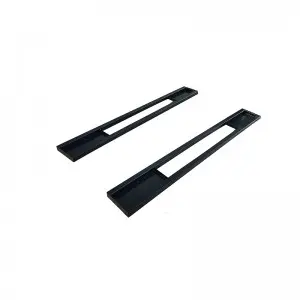
Understanding the Significance of the Cylinder: Its Applications, Properties, and Innovations in Modern Engineering and Design
The cylinder is a geometric shape that is simple yet incredibly significant in various fields of study and application. Defined as a three-dimensional shape that consists of two parallel circular bases connected by a curved surface at a fixed distance from the center of the bases, the cylinder is fundamental in both geometry and engineering. Its properties make it an essential element in the design and understanding of a broad range of structures, mechanisms, and components.

Understanding the Significance of the Cylinder: Its Applications, Properties, and Innovations in Modern Engineering and Design
When discussing cylinders, one cannot ignore their mathematical properties that contribute to their importance. The volume of a cylinder is calculated using the formula V = πr²h, where ‘r’ is the radius of the circular base and ‘h’ is the height of the cylinder. This inherent relationship allows engineers and architects to determine the amount of space inside cylindrical structures efficiently. Additionally, the surface area of a cylinder, represented by the formula A = 2πr(h + r), emphasizes the significance of both dimensions of the cylinder. These calculations are crucial when cylinders are used as storage tanks, pipes, or various types of vessels.
In the engineering and architectural realms, cylinders exhibit numerous applications. One of the most notable uses of cylinders is found in hydraulic systems, where hydraulic cylinders are utilized to convert fluid pressure into linear motion. These cylinders are essential in operations ranging from construction machinery to manufacturing equipment, offering a compact and powerful means of control. Each hydraulic cylinder is designed to handle significant loads and pressures, with a design focused on maximizing safety and efficiency.
Another prevalent application of cylinders is in the energy sector, particularly in the design of engines. Internal combustion engines rely heavily on cylindrical components, where pistons move within cylindrical chambers, compressing air and fuel mixtures to generate power. The efficiency and performance of these engines significantly depend on the precise engineering of these cylindrical parts, making them a crucial area of focus for automotive engineers.
Cylinders also play a pivotal role in storage solutions. From beverage cans to chemical storage tanks, the cylindrical shape is preferred for a variety of reasons, including structural integrity and ease of manufacturing. The uniform distribution of stress along the curved surface of the cylinder allows it to hold pressure effectively, making it ideal for containing liquids and gases. Furthermore, the cylindrical shape is space-efficient, allowing for optimal packing and storage capabilities.

Understanding the Significance of the Cylinder: Its Applications, Properties, and Innovations in Modern Engineering and Design
The significance of cylinders extends into the world of technology and design. In recent years, the rise of 3D printing technology has introduced innovative ways to create complex and customized cylindrical shapes for various purposes. Innovations in materials science have led to the development of advanced composites used in constructing lightweight yet sturdy cylindrical structures. These advancements are particularly beneficial in aerospace and automotive industries, where reducing weight while maintaining strength is critical.
In architecture, the aesthetic appeal of cylindrical forms cannot be overlooked. Iconic buildings, such as the Berlin TV Tower and the Guggenheim Museum in New York, feature cylindrical designs that are both visually striking and functional. The curvature of a cylinder can create unique spatial dynamics, influencing how light and space interact in a given environment. Architects increasingly use cylindrical shapes not just for practical purposes but also to enhance the architectural narrative and aesthetic impact of their designs.
As we move towards a more sustainable future, the cylinder’s role in renewable energy technology is becoming increasingly critical. Wind turbines, for example, utilize cylindrical blades to harness wind energy efficiently. The design of these blades, often optimized for hydrodynamic performance, exemplifies how cylinders can contribute to greener technology. Additionally, the integration of cylindrical energy storage systems, like compressed air energy storage, is on the rise, emphasizing the shape’s versatility in addressing modern energy challenges.
In conclusion, the cylinder is far more than a simple geometric figure; it is a fundamental shape that bridges the gap between creativity, functionality, and engineering. From its mathematical properties to its applications in engineering, architecture, and sustainability, the cylinder holds a pivotal role in shaping our physical and technological landscapes. As innovation continues to advance, the significance of the cylinder will undoubtedly expand, leading to new discoveries and applications that harness this timeless geometric form.car quick lift
